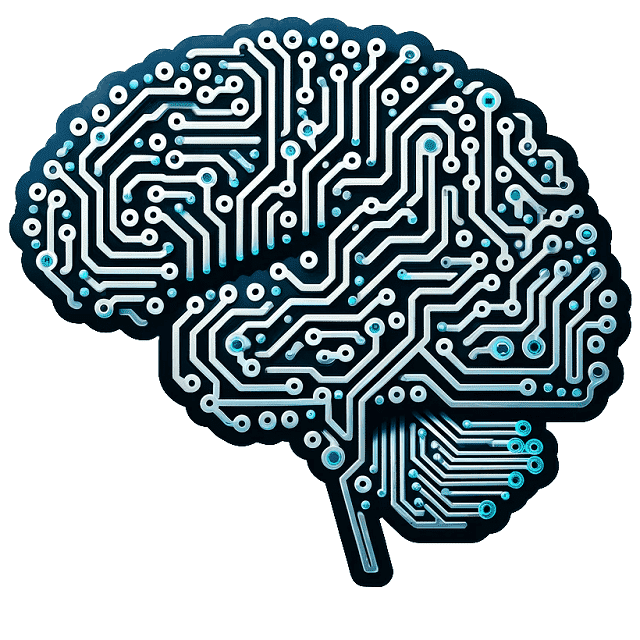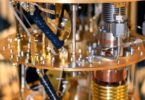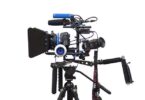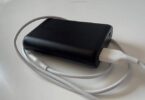What is NPU? or what is Neural Processing Units? Let us find the answer for this question in this blog post. Generative AI is revolving day by day, and one of the instances of this revolution can be seen here. As the demand for generative artificial intelligence use cases is increasing with time across verticals with diverse needs & computational demands, we can see that for artificial intelligence, a refreshed computing architecture is needed, which will be custom-designed. It starts with NPU, which stands for the neural processing unit.
It is designed from the ground up for generative artificial intelligence and helps to leverage a heterogeneous mix of processors, like CPU and GPU. Heterogeneous computing uses a proper processor with a neural processing unit so that they can improve the performance of applications, thermal efficiency, extend the battery life and offer an improved and new generative artificial intelligence experience.
What is NPU?
NPU refers to a dedicated processor which is especially designed to boost neural network processes. It can handle ML or machine learning operations forming the basis for AI-related tasks, including— natural language processing, speech recognition, photo or video editing processes, etc.
About Neural Processing Units:
It is integrated within the main processor to adopt SoC or System-on-Chip configuration in laptops, smartphones, tablets, etc. This processing unit is not like GPU or CPU; instead it is a completely different processor for data centers.
In order to boost AI interference at low power, it is made from the ground up. The evolution of its architecture was seen with the development of new AI models, algorithms and use cases.
AI workloads are made of computing neural network layers. These network layers consist of scalar, vector, and tensor math, which are followed by a non-linear activation function. Its superior design helps to handle the AI based workloads, while aligning properly with the Artificial Intelligence industry’s direction.
How Does A Neural Processing Unit Work?
Its special design allows it to process ML algorithms. When it comes to processing parallel data, the performance of GPUs is really outstanding. On the other hand, the NPUs are made for computations which are very crucial for running neural networks.
ML algorithms are used as the foundation on which Artificial Intelligence applications are built. Nowadays, computations for neural networks and machine learning have become challenging. Therefore, the need for a custom solution arose.
NPU helps to execute particular operations which neural networks require to boost deep learning algorithms. These Processing units are capable of executing AI/ Machine Learning operations efficiently instead of generating the framework to run those operations or running such environments that can permit the advanced computations.
In addition, Neural Processing Units for high-performance computation can affect the Artificial Intelligence performance. Language processing and image recognition are two fields where this processing unit is transforming the industry at present. Besides, the power it consumes is low.
Applications of Neural Processing Units:
It is useful to those fields which require efficient processing of AI/ML workloads. In natural language processing, these processing units are getting deployed for language translation, sentiment analysis, etc. Besides, these are deployed for chatbots and text summarization. Moreover, these can process huge amounts of data in cybersecurity and help in intrusion detection. Additionally, these help to parse visual data. Healthcare and autonomous vehicles are the two industries where rapid image analysis is required. That’s why this processing unit is used in these fields.
People still have a lot of things to explore in the world that this processing unit opens up. These processing units help to blur backgrounds in video calls and produce artificial intelligence based images.
Advantages and Limitations of NPU:
The Neural Processing Units can offer quicker inference speeds in deep learning models. Besides, these help to boost inference tasks. As soon as the neural network computations will be offloaded to these processing units, latency will be reduced and will help to improve user experience. As these are more power efficient than their GPU and CPU counterparts, they are getting deployed in IoT and edge devices.
But the drawback is that these are very fast. Data storage systems can consist of data leaks and data warehouses are introduced responding to the data processing speeds’ physical limits. The traditional storage systems may get overwhelmed by these processing units. So, for getting properly used at scale, these processing units will require a holistic storage solution that will be fast enough for keeping up.
NPU vs GPU:
It is possible to run several AI/ML workloads on GPUs. However, it is important to discuss the things that make GPU and NPU different.
GPUs come with several parallel computing capabilities. But all of the available GPUs can’t do it properly beyond processing graphics. The reason is that these need special integrated circuits to process ML workloads. These circuits are available in the most popular Nvidia GPUs as Tensor cores. What is special about AMD and Intel is that they have integrated these circuits into their GPUs, which are especially designed to handle resolution upscaling operations.
After taking the circuits out of a Graphics Processing Unit, the neural processing unit helps to turn these into a dedicated unit on its own. As a result, it can process all AI activities more efficiently at a lower power level. Thus, it becomes perfect for laptops. But it will limit the heavy-duty workloads that will still need a Graphics Processing Unit for running.
Role In Different Systems:
These processing units help to complement the functions of CPUs and GPUs. GPUs can render detailed graphics in an excellent way, whereas CPUs are able to handle a huge range of activities. Neural Processing units are experts at executing AI-driven tasks. It makes sure that none of the processors get overwhelmed, and allows a smooth operation across the system.
This processing unit can help to blur the background in video calls. Besides, it enables you to free up the GPU so that it can focus on more intensive activities. In addition, these are capable of handling object detection as well as other artificial intelligence related procedures in video or photo editing and help to boost the total efficiency of the workflow.
-
In PCs:
In laptops and PCs, these processing units are becoming very common now. For instance, these are integrated alongside GPUs and CPUs in Qualcomm’s Snapdragon X Elite processors and Intel’s Core Ultra processors. In order to handle AI activities more quickly, these neural Processing units are excellent. It helps to reduce the load on the other processors. As a result, computer operations become more smooth and efficient.
For example, Qualcomm’s NPU has the potential of performing 75 Tera operations each second. It indicates how much it is able to handle generative AI imagery. In modern devices, this inclusion of NPUs indicates that the industry can give you the benefit of the latest AI technologies.
-
In Mobile Devices:
When it comes to smartphones the Neural Processing Unit p performs a key role in Artificial Intelligence computing and applications. The first company which integrated NPUs into smartphone CPUs was Huawei. Compared to traditional GPUs and CPUs, it can boost energy efficiency and AI arithmetic power. Apple’s Bionic mobile chips also come with these processing units to accomplish some tasks easier, such as video stabilization, photo correction, etc.
Additionally, this processing unit helps to boost the device’s capabilities to detect content in images. In addition, it helps to adjust camera settings to get the best shots. While it can generate bokeh effects in selfies, it is also able to offer AI-driven features.
-
In Other Devices:
These processing units are now very popular in a lot of different devices like cameras and TVs where advanced processors do not exist. At present, these processing units are getting deployed in almost all types of devices around the home.
For instance, TVs come with these processors to upscale older content’s resolution to 4K resolution. When it comes to cameras, Neural Processing Units are getting used to create image stabilization and quality improvement, while helping in auto-focus, facial recognition, etc. Moreover, Neural Processing Units are getting used in smart home devices for helping in processing ML on edge devices for security information or voice recognition which a lot of customers are not willing to send to the cloud server to get processed because of the sensitive nature of it.
The Future of NPU:
The demand and growth of these processing units will increase more as we indulge more in the AI-driven future. AI Processing is now becoming more efficient day by day and all credits go to major players like Intel, AMD, and Qualcomm, which integrate the Neural Processing Units into their modern processors.
Devices that come with these processors will have the potential to perform AI tasks more quickly. As a result, data will be processed very fast, which will be beneficial to all users. This processing unit is trying to make the computing experience smarter and improved through many ways like advanced AI filters in applications, faster video editing, handling advanced Artificial Intelligence activities in smartphones, etc.
The Bottom Line:
NPU (Neural processing units) is a powerful tool that is custom-built for ML & AI algorithms and could revolutionize artificial intelligence/ machine learning workloads. That’s why most companies are interested in investing in them, as ML and AI can reshape technologies, culture, and art. As the Neural processing unit is specialized in both artificial intelligence-based activities and neural network operations, it helps to reduce the load on traditional CPU and GPU.







